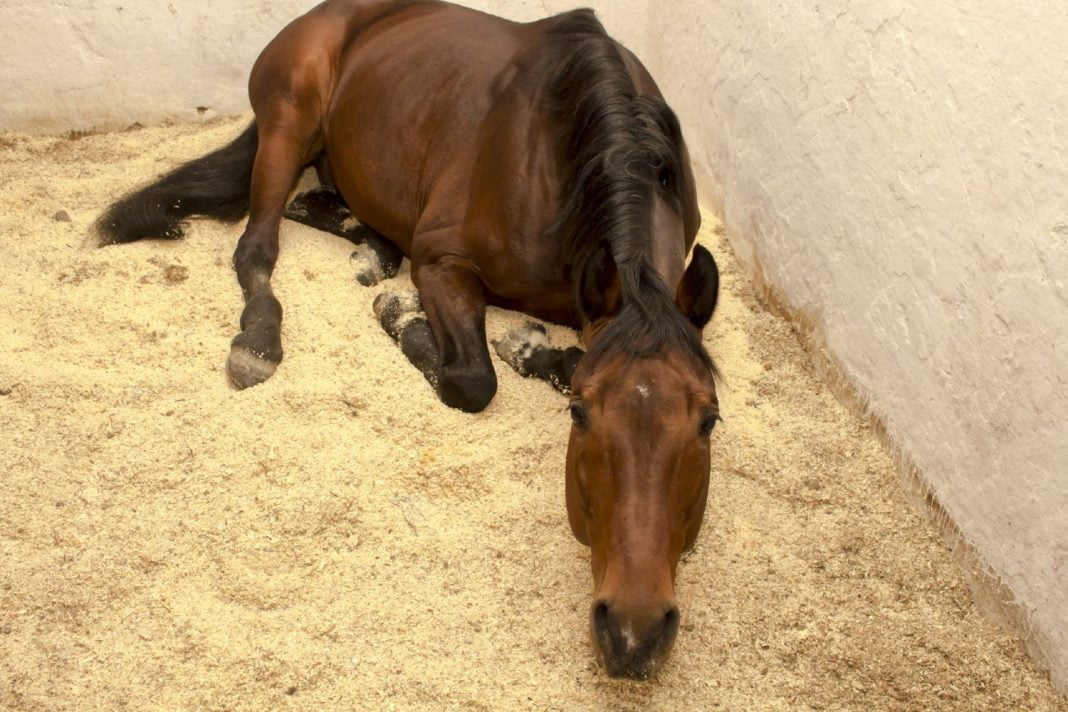Menu

Cleaning stalls and fixing the bedding gives a person time to think. It is the sort of repetitious chore that frees your mind to contemplate your training goals, prioritize your tack wish list, consider names for an expected foal and mull over other questions. It is also a perfect time to reevaluate your bedding choices.
You are probably using whatever bedding material is readily available in your area and fits your budget. And there is nothing wrong with that. Assuming your horse does not have any special health needs and the bedding you have chosen is safe. Nonetheless, it is not a bad idea to consider other options. After all, the purpose of bedding may be fairly simple - to cushion and insulate the floor surface. But a variety of factors can determine the best choice for a particular situation.
You may also like to read: Dogs in the stable: How to avoid a bad experience
Beyond availability and cost, the potential for dust is always an important consideration. As is also the “palatability” of a material - for a variety of reasons. You do not want bedding that your horse is tempted to eat. Another variable is absorbency: A highly absorbent material that can capture urine and slow the development of ammonia fumes may be the best choice for horses on high protein diets and/or for horsekeepers with tight mucking schedules.
Here we give you an overview of some of the common bedding options. With this information, you can spend your next stall-cleaning session giving some productive thoughts to the material you are sorting through.
PROS: Widely available, aesthetically pleasing
CONS: Can be prone to mold if harvested or stored improperly. Horses may try to eat it. Not very absorbent
Straw can make a very soft bedding, particularly when chopped a second time after harvest. This softness can encourage horses to lie down and get more rest. Straw is also the bedding of choice for foaling, as opposed to wood shavings.
Straw is less dusty than wood products, but only if it is harvested and stored correctly. A bale of straw needs to be checked as closely as a bale of hay for signs of moisture and mold.
PROS: Widely available; more absorbent than straw
CONS: Can be dusty. Certain types of wood can cause allergic reactions. Often more pricey than straw materials
Wood-based beddings tend to perform well. They often have a water-holding capacity, maybe a little better than straw. But this depends on how finely it is processed.
While more absorbent, sawdust is dustier than shavings. Thia can lead to or exacerbate respiratory problems. And certain woods can also be downright harmful to horses.
While sawdust and shavings are the most popular wood bedding products, pellets are also an option. They are very absorbent but also much more expensive than the regular bedding material as straw. There may be differences in various pellets, in terms of hardwood or softwoods. Some of the pellets used in heating stoves may be hardwood. Whereas most of the bedding pellets tend to be a softwood, but for bedding you can use either.
PROS: Highly absorbent; low palatability for horses
CONS: Often very expensive
You might be more familiar with it in a gardening setting. But peat moss - the dead, fibrous material that forms when mosses decompose in bogs is also sometimes used as bedding for horses. There are definitely advantages to it: A little goes a long way, it is extremely absorbent. However, peat moss is hard to find in many areas, and can be very expensive. The advantages include good absorption, and it is soft and comfortable for the horse.